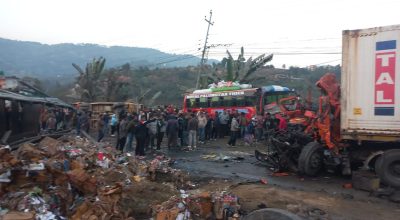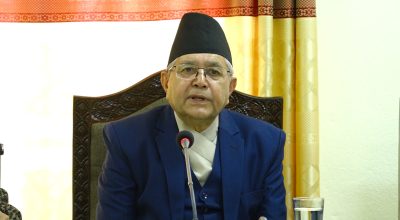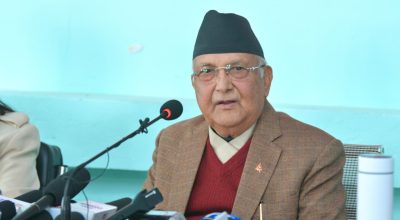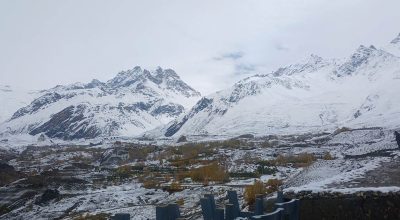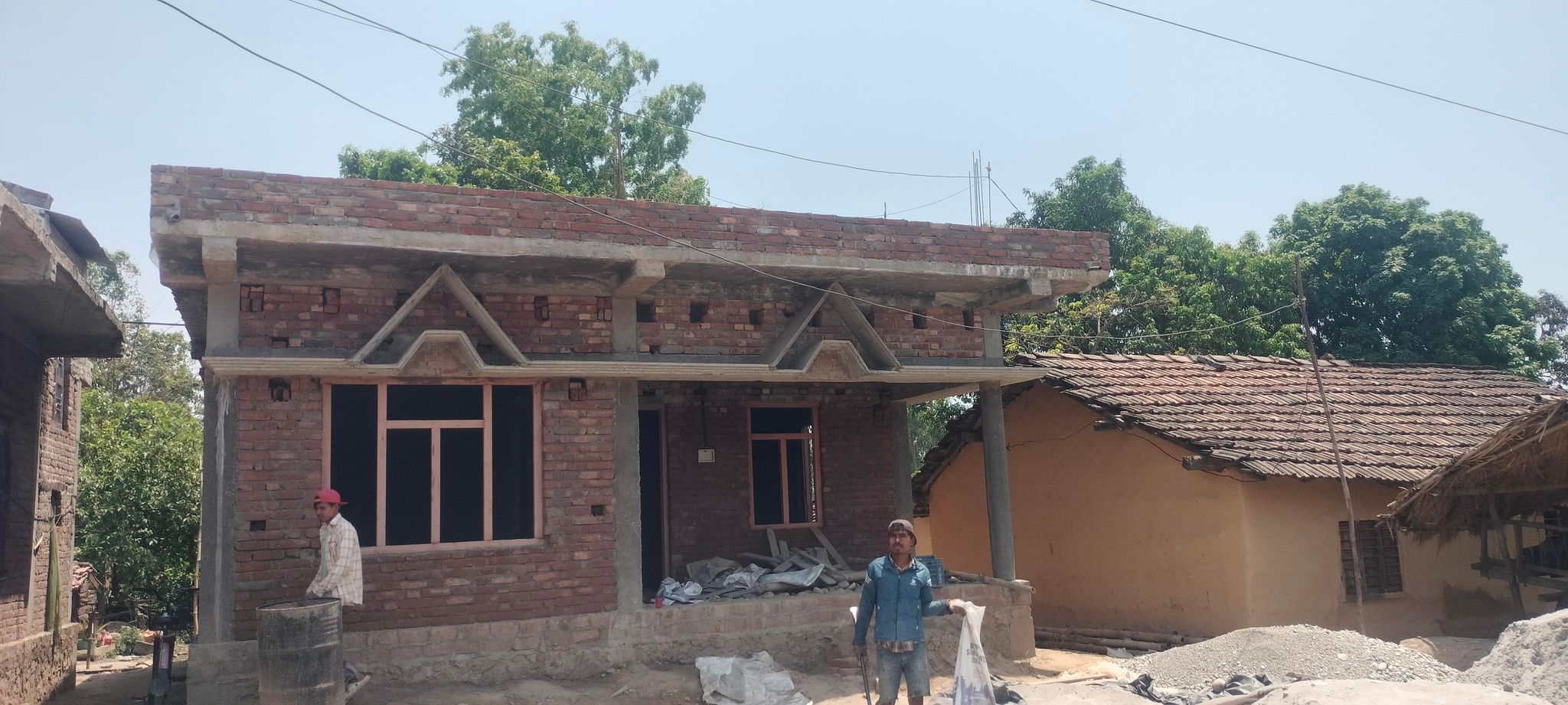
Gokul Joshi
Kanchanpur, Oct 22: Man Bahadur Dagaura, 45, of Bedkot municipality-3 vividly recalls the scene of his settlement of two decades back. That time, his and the families of other Kamaiyas like him used to live in tin sheds. The makeshift shelters were small and used to be crowded and life was hard.
Their settlement used to be inundated as the floodwater from a nearby river used to enter the settlement in the monsoon. Since it was a low-lying area, the fields around the settlement would be waterlogged and unsuitable for cultivation for long.
Ashapur is the settlement of the former Kamaiyas. The government had allotted land to 16 Kamaiya families at this place after abolishing the Kamaiya system in 2002. Ashapur settlement has changed now.
“We had to endure inundation and land erosion as the flood water from the river used to enter our homes during the monsoon. We had hard time making ends meet as our farm land was rendered uncultivable,” Dagaura recalled.
Later, embankments were constructed along the river bank and soil was filled in their fields. These days, cemented houses have replaced the tin sheds. The number of freed Kamaiya families has also increased to 22.
Not only has the face of Ashapur improved, the living standard of the freed Kamaiyas has also enhanced. Most of the people here work as masons and builders. Some have gone for foreign employment while many families have been making a good income from vegetable farming.
“Life was hard working as a Kamaiya. We used to get two meals a day working nearly 24 hours. Sending our kids to school was a mere dream,” said Janaki Chaudhary, herself a former Kamaiya.
She said that the Kamaiya women had to do all sorts of work at their master’s house. These included working in the master’s fields, tending their cattle, collecting firewood and the like.
According to her, life was still hard for them for some years even after they were freed of the exploitative labour practice. She added that now they are eking out a living through employment as per one’s capacity. Chaudhary is into vegetable cultivation these days and it has become the main source of income for her family. She started vegetable farming after taking training on vegetable cultivation which was organized by an NGO after the abolishment of the Kamaiya system.
According to her, she earns Rs 150 thousand to 200 thousand annually by selling vegetables she grows. The government had provided five kaththas of land per family to the Kamaiyas following their emancipation. Chaudhary rented some more land and she has been growing rice, wheat and lentil on this land. She grows vegetables on nine kaththas of her own land, along with mushroom farming.
Man Bahadur Dagaura has also rented 10 kaththas (3,395 metres square) of land for growing vegetables. He sells vegetables at a vegetable market in Mahendranagar town and has been making a decent living. He has built a cemented house from the income he makes by selling vegetables.
Bikram Dagaura went abroad for work three times after the abolishment of the Kamaiya practice. He returned home after his wife and son fell sick. Now he is also into vegetable farming and making a good income from it. “I worked as a menial worker for nine years in foreign land. I am now doing vegetable farming at my home and I am also making a good income by selling vegetables. My earning here is same as I used to earn abroad,” he narrated.
Bal Bahadur Dagaura works as a builder. He is a famous builder in the area and he is never short of work. Various organizations had conducted skill-oriented training for the freed Kamaiyas and Bal Bahadur also enlisted in construction training. “In the beginning, I worked as a construction labourer and now I have become a builder. I started earning more once I became the head builder and it has become easy for me to provide for my family.” #monsoon #bondedlabour #labour #nepal #rss






